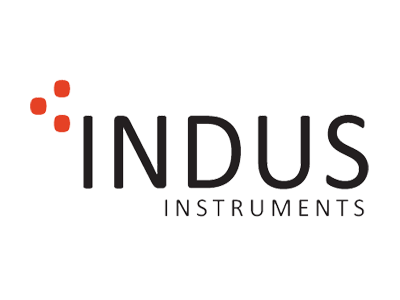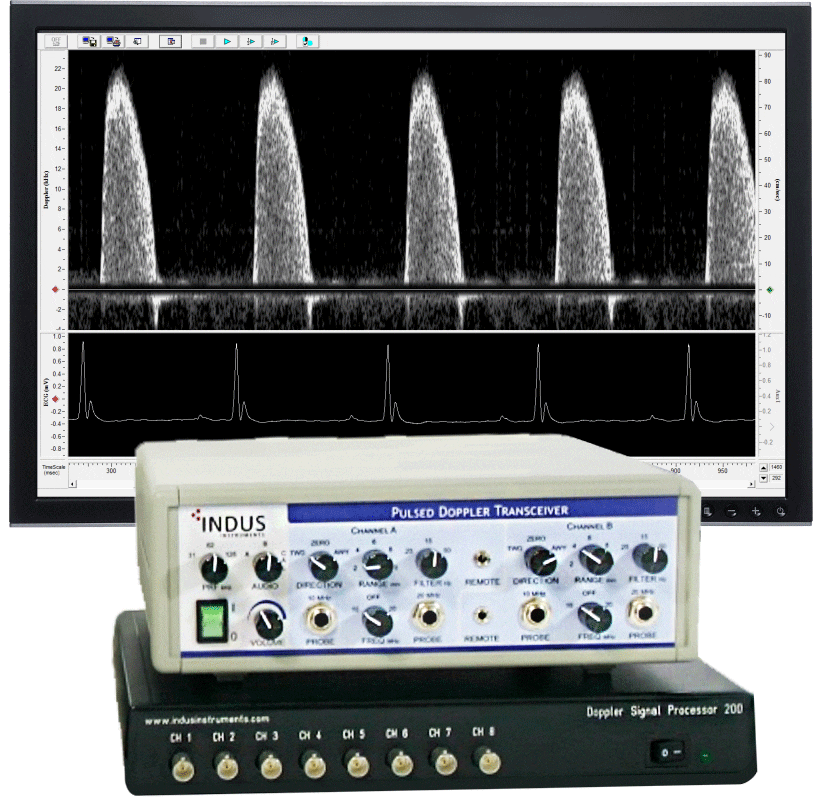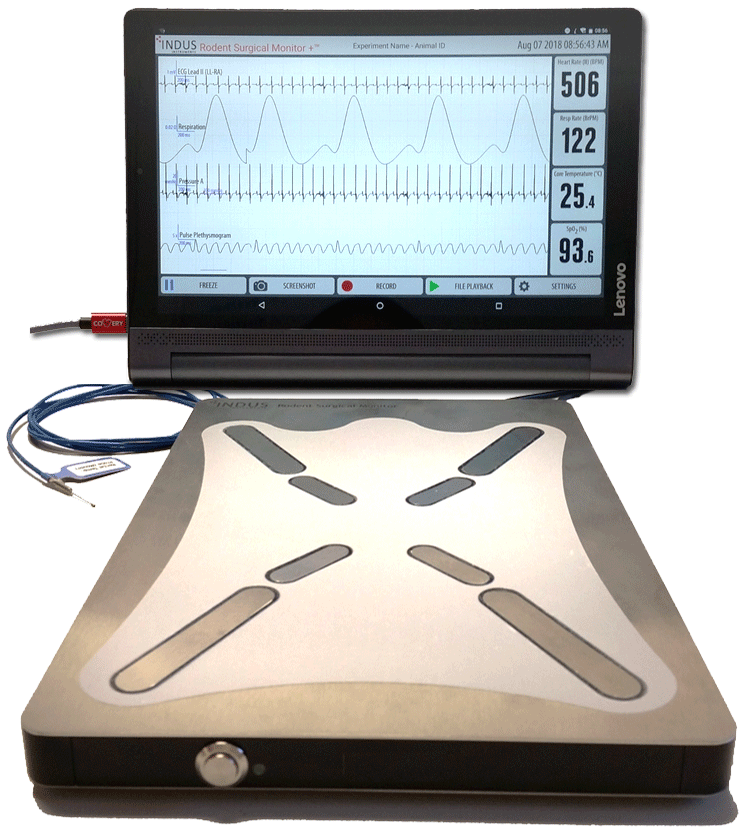
INNOVATIVE SOLUTIONS FOR CARDIOVASCULAR RESEARCH USING ANIMAL MODELS
Noninvasive blood flow velocity system
The Indus Doppler Flow Velocity System measures and analyses noninvasive blood flow for cardiovascular research in rodents, bats, small animal models and fish (Zebrafish and Giant Diano).
The high sampling rates provide excellent temporal resolution, making this the ideal system for studying fast heart rates and rapid blood accelerations present in small animals.
The system is a proven and cost-effective alternative to conventional imaging. It is used for studies in cardiac function, coronary flow reserve, vascular injury and pulse wave velocity.
Typical peripheral cardiovascular applications include:
- Aging
- Disease progression
- Remodeling
- Effects of surgical or pharmacological interventions
Small handheld probes measure blood velocity in the heart and the arteries.
Implants and larger animal measurements
An implanted extra-vascular Doppler cuff can be used to measure blood flow velocities for chronic (implanted), extra-vascular applications or when the vessel is not accessible using the probe.
Integrated Doppler Workstation analysis software
The integrated data analysis software displays waveforms and generates spectrograms for analysis and reports. It provides excellent temporal resolution for displaying fast heart rates and rapid blood accelerations
System includes 4 key components
The system includes the Pulsed Doppler Transceiver, Doppler Signal Digitizer, Doppler Workstation and Handheld Probe.

Advanced surgical monitor for rodents
The Indus Rodent Surgical Monitor+ is an advanced, integrated surgical monitoring system for small animal research that monitors physiological status and enables reliable, consistent surgical outcomes for better quality data. Parameters include:
- Core body temperature – can be maintained and regulated via the Heated Surgical Platform
- ECG
- Respiration rate
- Heart rate
- Pulse oximetry (Sp02)
- Pressure
- Blood pressure – using high fidelity Indus Instruments pressure-tipped catheters. Sizes include 1.2F for mice and 1.6F for rats.
The system provides proper titration of anesthesia, providing the functionality to help researchers to achieve consistent outcomes, increase survival rates and satisfy IACUC requirements.
Each system includes a wireless Touchscreen Display Unit with software (wired connection also available), Heated Surgical Platform and Temperature Probe.
Experiment consistency
The adjustable system software records and displays high resolution real-time waveforms and numeric parameters for easy monitoring. It enables you to define optimal study conditions, make real time comments, take screen shots automatically and use customizable presets for experiment consistency.
Intelligent zone operating platform
The easy-to-clean surgical-grade stainless steel operating platform supports surgical best practices. It incorporates intelligent zone heating with fast response to changing lab conditions, ultra-low noise, high-resolution ECG electronics, noninvasive electrodes for supine/prone and caudal/rostal as well as a port for external needle electrodes for positioning subjects in other orientations.
Flexibility to extend and enrich your experiments
Optional extras include 4 or 8 Channel Analog Output Cable to export raw data to virtually any data acquisition system and provide additional functionality, Pulse Oximeter to noninvasively measure arterial blood oxygenation, and Pressure Catheter to measure high fidelity arterial, venous, or ventricular pressures in rodents.
Optional components include Pulse Oximetry Thigh Clip, Pressure Adapter Cable and Catheters, External Needle Electrodes and additional rectal temperature probes.

